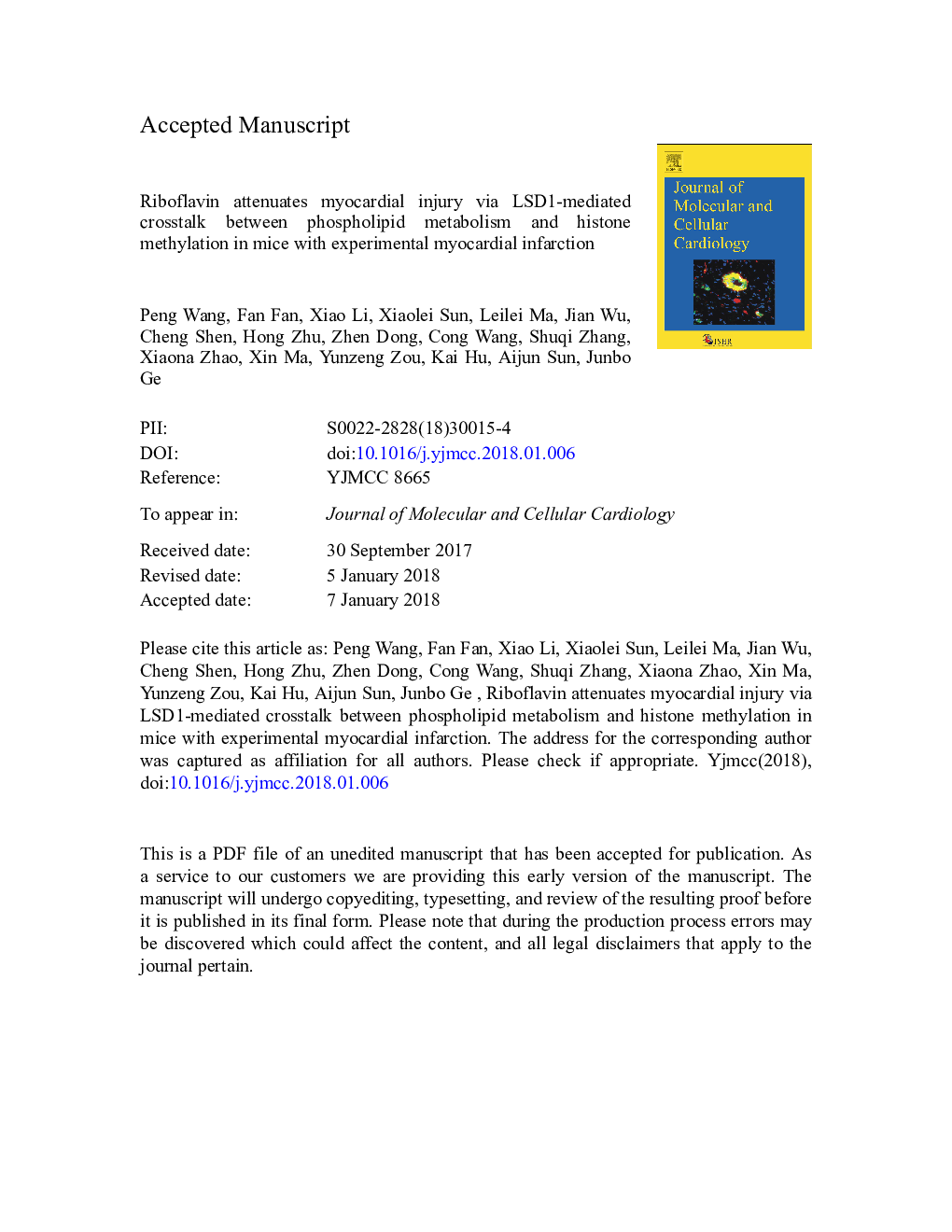| Article ID | Journal | Published Year | Pages | File Type |
|---|---|---|---|---|
| 8473555 | Journal of Molecular and Cellular Cardiology | 2018 | 59 Pages |
Abstract
The underlying mechanisms responsible for the cardioprotective effects of riboflavin remain elusive. Current study tested the hypothesis that riboflavin protects injured myocardium via epigenetic modification of LSD1. Here we showed that myocardial injury was attenuated and cardiac function was improved in riboflavin-treated mice with experimental myocardial infarction (MI), while these protective effects of riboflavin could be partly blocked by cotreatment with LSD1 inhibitor. Riboflavin also reduced apoptosis in hypoxic (1% oxygen) H9C2 cell lines. Results of ChIP-seq for H9C2 cells showed that riboflavin activated LSD1, as verified by decreased H3K4me2 levels of target genes. Subsequent LEGO bioinformatics analysis indicated that phospholipid metabolism genes Lpcat2 and Pld1 served as the potential target genes responsible for the LSD1 mediated protective effects. Overexpressions of Lpcat2 and Pld1 aggravated hypoxic injury in H9C2 cells, while these detrimental effects could be attenuated by overexpression of LSD1. We thus propose that riboflavin alleviates myocardial hypoxic/ischemic injury by activating LSD1 cellular activity and modulating the expression of phospholipid metabolism genes. LSD1-mediated crosstalk between phospholipid metabolism and histone methylation might thus be an important mechanism for the cardioprotective effects of riboflavin.
Related Topics
Life Sciences
Biochemistry, Genetics and Molecular Biology
Cell Biology
Authors
Peng Wang, Fan Fan, Xiao Li, Xiaolei Sun, Leilei Ma, Jian Wu, Cheng Shen, Hong Zhu, Zhen Dong, Cong Wang, Shuqi Zhang, Xiaona Zhao, Xin Ma, Yunzeng Zou, Kai Hu, Aijun Sun, Junbo Ge,
